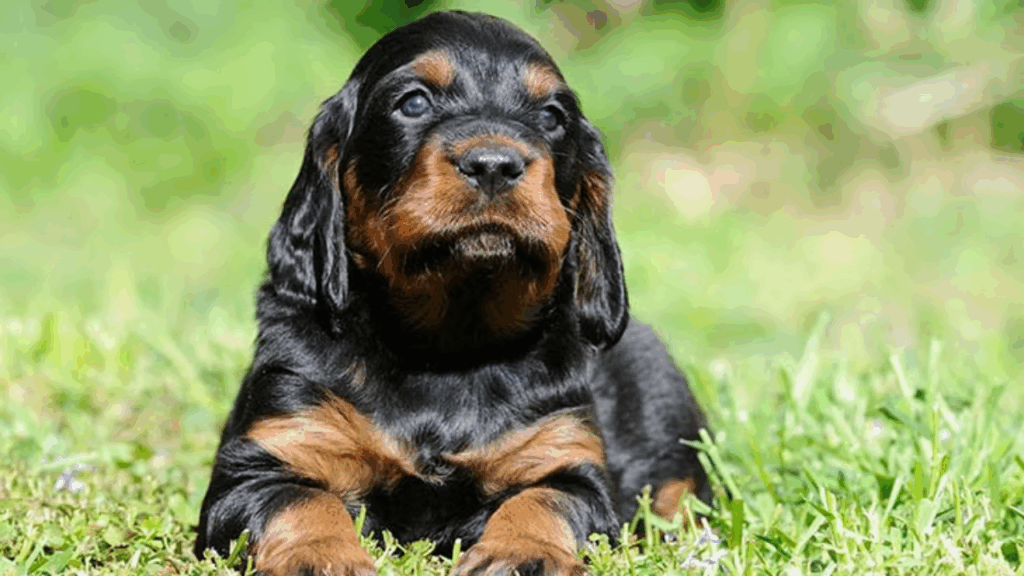The Gordon Setter, distinguished by its striking black-and-tan coat, graceful build, and noble presence, is the heaviest and most powerful of the setter breeds. Developed in Scotland in the 17th century, the Gordon Setter is renowned for its loyal temperament, intelligence, and endurance in the field. This breed blends the athleticism of a working gundog with the affectionate nature of a devoted companion, making it a favorite among hunters and families alike.
History and Origins
The Gordon Setter traces its roots back to Scotland, where it was originally developed as a bird dog. The breed gained recognition and refinement in the early 19th century at the kennels of Alexander Gordon, the 4th Duke of Gordon, hence the breed’s name.
Gordon Setters were bred to excel in pointing and retrieving game birds, especially grouse and partridge, in the rugged Scottish terrain. These dogs were known for their stamina, keen noses, and methodical hunting style, making them well-suited for long days in the field.
While less common than the Irish or English Setters, the Gordon has retained a loyal following of sportsmen and dog lovers who appreciate its unique blend of beauty, brains, and brawn.
Appearance
The Gordon Setter is an elegant and muscular dog, known for its regal bearing and distinctive coloration. Males typically stand 24 to 27 inches tall at the shoulder and weigh 55 to 80 pounds, while females are slightly smaller.
Its coat is one of the breed’s most notable features: a shiny, soft, black coat with rich mahogany markings on the legs, chest, muzzle, eyebrows, and under the tail. The feathering on the ears, chest, belly, legs, and tail adds to the breed’s graceful appearance.
With a strong, slightly arched neck, deep chest, long muzzle, and dark, expressive eyes, the Gordon Setter gives off an air of intelligence and nobility.
Temperament and Personality
Gordon Setters are known for being loyal, affectionate, and devoted to their families. They form strong bonds with their people and often choose one family member as their primary person. These dogs are typically gentle and good with children, making them excellent family pets when properly trained and socialized.
They are naturally protective and alert, which makes them good watchdogs. While not aggressive, Gordons can be wary of strangers until properly introduced.
In contrast to their setter cousins, Gordon Setters are often more serious and focused. They’re intelligent and independent thinkers, traits that served them well in the field but can lead to a stubborn streak. Consistent, positive reinforcement training and early socialization are key to raising a well-mannered Gordon Setter.
Exercise and Activity Levels
As a working gundog, the Gordon Setter has high energy and needs regular exercise to stay healthy and content. Long daily walks, runs, or hikes are ideal, as well as time to run off-leash in safe areas.
They excel in various dog sports, including obedience, agility, field trials, and tracking. Their natural instincts make them particularly suited for activities that involve scent work and retrieving.
Without sufficient physical and mental stimulation, Gordon Setters can become bored and destructive. A tired Gordon is a well-behaved Gordon, so prospective owners should be ready to commit time and energy to their daily routines.
Grooming and Care
The Gordon Setter’s silky coat requires regular grooming to stay clean and tangle-free. Brushing two to three times a week helps prevent mats and reduces shedding. Special attention should be paid to the feathered areas, where debris and tangles are more common.
Additional grooming needs include:
- Regular ear cleaning, especially for their long, pendulous ears prone to infections
- Nail trimming to avoid overgrowth
- Dental care for overall health
Bathing can be done as needed, depending on the dog’s activity level and environment.
Health and Lifespan
Gordon Setters are generally a healthy breed, but like all dogs, they are prone to certain conditions. Common health issues include:
- Hip dysplasia
- Elbow dysplasia
- Progressive retinal atrophy (PRA), which can cause blindness
- Hypothyroidism
- Bloat (gastric torsion), a serious and potentially fatal condition
Responsible breeders test for genetic conditions, and routine veterinary care is essential. With proper care, the average lifespan of a Gordon Setter is 10 to 12 years.
Living with a Gordon Setter
Gordon Setters thrive in homes where they are included in daily life. They do best in active households that enjoy outdoor activities and can provide plenty of attention and interaction.
Due to their strong hunting instincts and sense of smell, they may be tempted to follow scents and wander, so a secure, fenced yard is important. While they can adapt to various living situations, they are not suited for sedentary or urban lifestyles without adequate outlets for their energy.
Conclusion
The Gordon Setter is a breed that combines strength, elegance, and a deep sense of loyalty. Though they require commitment in terms of exercise and grooming, they reward their owners with unwavering companionship, intelligence, and beauty. Whether in the field or curled up beside you at home, the Gordon Setter is a regal and devoted friend for those who appreciate the spirit of a true sporting dog.

Andy Parker is a dog lover, writer, and senior editor at BarkPicks. With years of experience covering canine health, training, and gear, he helps pet parents make smarter choices for happier, healthier dogs. Andy shares his home (and heart) with two rescue pups, Charlie and Mia.



